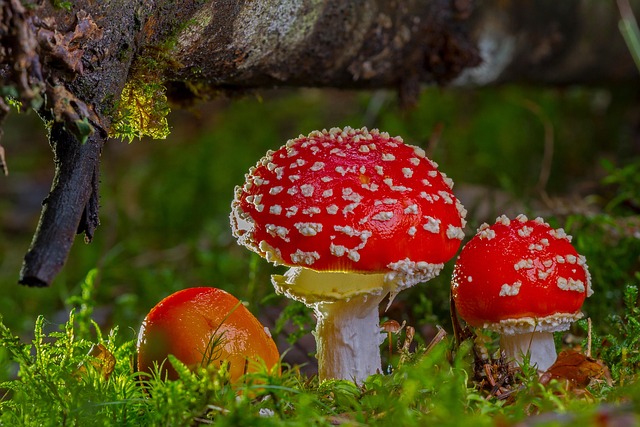Understanding fly behavior is crucial for effective and safe commercial fly removal. Flies are attracted to food, organic matter, and heat, so strategies should focus on eliminating accessible food sources, proper waste disposal, using natural repellents and traps, keeping windows closed, and employing fine mesh screens. Child- and pet-friendly options now exist, leveraging essential oils like citronella and lavender. Natural methods such as biological control agents (e.g., ladybugs), good hygiene, regular cleaning, sealing entry points, and natural repellents are ideal for commercial spaces. Outdoor methods include UV lights, sticky pads, proper sanitation, and eco-friendly pesticides. Combining these tactics creates a safe, fly-free environment for all.
Tired of swatting flies in your home, or dealing with persistent outdoor pests? Discover safe and effective fly control methods that are kind to kids and pets. This comprehensive guide explores diverse strategies, from understanding fly behavior to exploring child- and pet-friendly products, natural solutions for commercial spaces, and humane outdoor methods. Implement these techniques for a peaceful environment free of pesky intruders, ensuring comfort for all, especially in today’s digital era where bustling activities take center stage.
Understanding Fly Behavior: Key to Safe Control
Understanding fly behavior is a crucial step in implementing effective and safe methods for their control, especially in environments where children and pets are present. Commercial fly removal strategies must consider these behaviors to ensure minimal disruption and maximum safety. Flies are attracted to various stimuli, including food sources, organic matter, and heat. They have an incredible sense of smell, which guides them to ripe fruits or decaying materials. Knowing this, targeted control methods can be employed, such as eliminating accessible food sources and properly disposing of waste.
Additionally, fly repellents and traps that utilize natural scents or specific frequencies can deter flies without causing harm. For example, certain herbs like citronella and lavender have been shown to repel flies effectively. In residential settings, keeping windows and doors closed during peak fly activity and using fine mesh screens can significantly reduce indoor fly populations. By combining these strategies, it’s possible to create an environment that discourages flies while ensuring the well-being of children and pets.
Child- and Pet-Friendly Products for Fly Removal
When it comes to keeping flies at bay, especially in homes with children and pets, there’s a growing demand for safe and effective solutions. Traditional commercial fly removal methods often rely on chemical-based insecticides that can be harmful if ingested or inhaled, particularly by young children and animals. Fortunately, the market now offers a range of child- and pet-friendly alternatives designed to control fly populations without putting loved ones at risk.
These innovative products leverage natural ingredients and non-toxic methods for fly removal. For instance, certain essential oils like citronella, lavender, and peppermint have proven effective in repelling flies due to their strong scents. Many safe fly traps and sprays are also available, using combinations of these natural elements alongside other organic compounds to attract and capture flies humanely. Such options provide peace of mind for parents and pet owners, ensuring a healthier environment without compromising on pest control.
Natural and Eco-Friendly Solutions for Commercial Spaces
Many commercial spaces, such as restaurants and retail stores, face challenges with fly infestations due to their proximity to food sources and waste areas. Fortunately, there are natural and eco-friendly solutions for effective commercial fly removal without resorting to harsh chemicals. One such method is the use of biological control agents, like beneficial insects that feed on flies, such as ladybugs and lacewings. These natural predators can be released in strategic locations to help suppress fly populations.
Additionally, implementing good hygiene practices and maintaining clean environments is crucial for commercial fly removal. Regular cleaning, proper waste management, and sealing entry points can significantly reduce fly habitats. Natural repellents like essential oils (e.g., citronella, peppermint) and plant-based solutions can also be used to create a less inviting environment for flies. These eco-friendly methods not only protect businesses from health risks associated with fly infestations but also contribute to a healthier, more sustainable ecosystem.
Effective Yet Humane Methods for Outdoor Areas
In outdoor areas, where flies can be particularly persistent, there are several effective yet humane methods for commercial fly removal that avoid harsh chemicals. One proven approach is using natural repellents like citronella candles or plants like lemongrass and lavender, which can deter flies without harming them or the environment. Another popular option is mechanical fly traps, such as UV lights or sticky pads, which attract and capture flies humanely. These methods not only reduce fly populations but also minimize environmental impact.
Additionally, proper sanitation plays a crucial role in outdoor fly control. Regularly cleaning up food waste and eliminating standing water—common breeding grounds for flies—can significantly reduce their presence. Organic pesticides derived from natural ingredients can also be used as a last resort, ensuring that the process remains safe for children and pets while effectively managing fly infestations.
In conclusion, implementing child- and pet-safe fly control methods is essential for creating healthy environments both at home and in commercial spaces. By understanding fly behavior and utilizing a range of safe and eco-friendly solutions, we can effectively manage these pests without causing harm to our loved ones or the planet. From natural repellents to humane outdoor methods, there are numerous options available for achieving commercial fly removal while prioritizing safety and sustainability.
